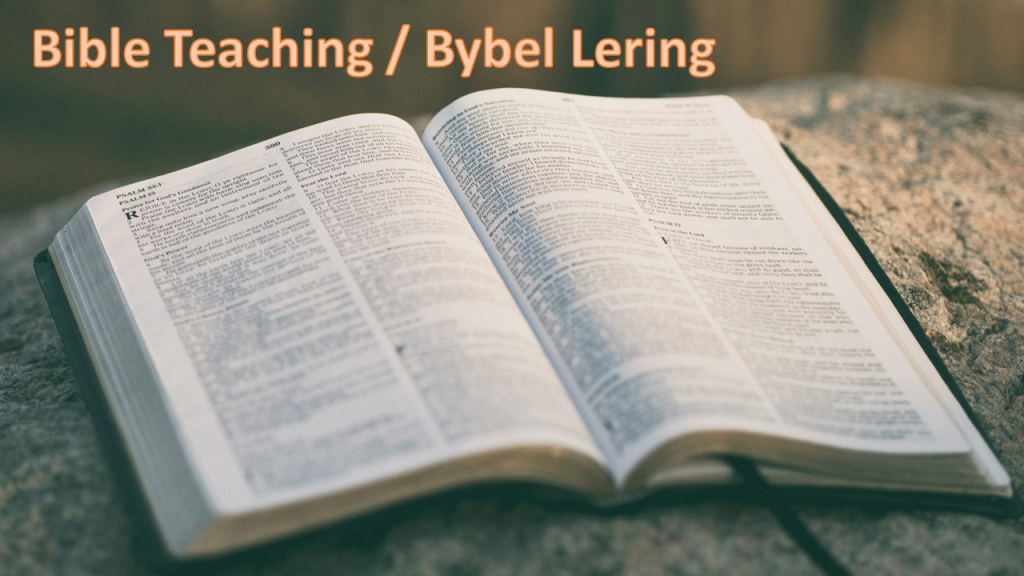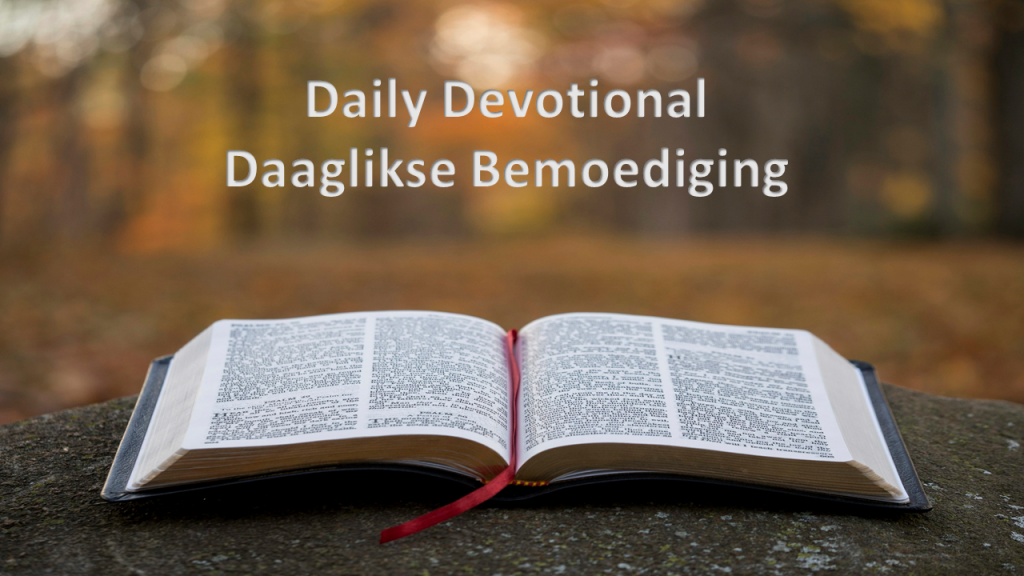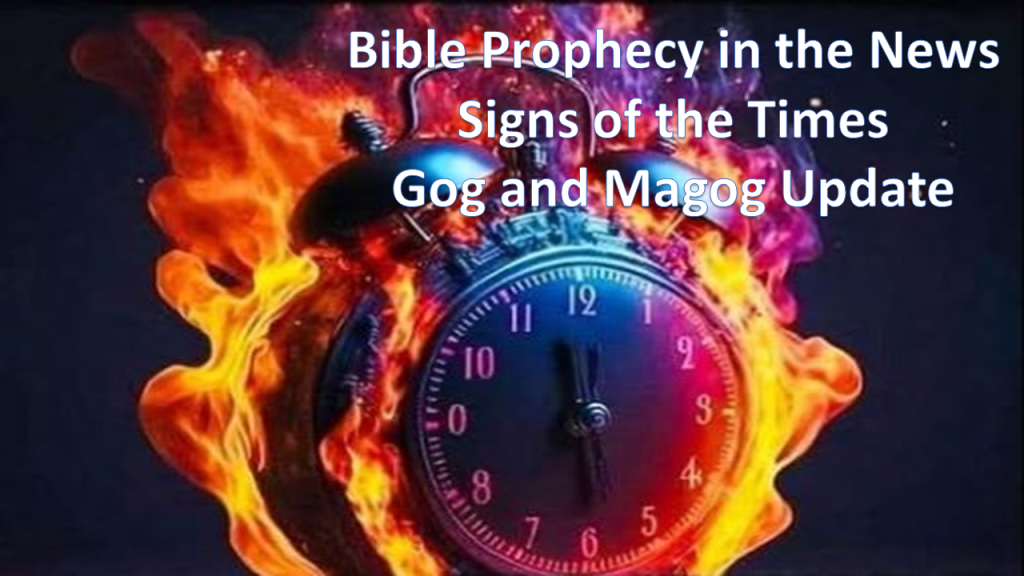Hosted by TruLight Ministries – The Place of Truth

The concept of “dying to self” is found throughout the New Testament. It expresses the true essence of the Christian life, in which we take up our cross and follow Christ. Dying to self is part of being born again; the old self dies and the new self comes to life (John 3:3–7). Not only are Christians born again when we come to salvation, but we also continue dying to self as part of the process of sanctification. As such, dying to self is both a one-time event and a lifelong process.
Jesus spoke repeatedly to His disciples about taking up their cross (an instrument of death) and following Him. He made it clear that if any would follow Him, they must deny themselves, which means giving up their lives—spiritually, symbolically, and even physically, if necessary. This was a prerequisite for being a follower of Christ, who proclaimed that trying to save our earthly lives would result in our losing our lives in the kingdom. But those who would give up their lives for His sake would find eternal life (Matthew 16:24–25; Mark 8:34–35). Indeed, Jesus even went so far as to say that those who are unwilling to sacrifice their lives for Him cannot be His disciples (Luke 14:27).
The rite of baptism expresses the commitment of the believer to die to the old, sinful way of life (Romans 6:4–8) and be reborn to a new life in Christ. In Christian baptism, the action of being immersed in the water symbolizes dying and being buried with Christ. The action of coming out of the water pictures Christ’s resurrection. Baptism identifies us with Christ in His death and resurrection, portraying symbolically the whole life of the Christian as a dying to self and living for and in Him who died for us (Galatians 2:20).
Paul explains to the Galatians the process of dying to self as one in which he has been “crucified with Christ,” and now Paul no longer lives, but Christ lives in him. Paul’s old life, with its propensity to sin and to follow the ways of the world, is dead, and the new Paul is the dwelling place of Christ who lives in and through him. This does not mean that when we “die to self” we become inactive or insensible, nor do we feel ourselves to be dead. Rather, dying to self means that the things of the old life are put to death, most especially the sinful ways and lifestyles we once engaged in. “Those who belong to Christ Jesus have crucified the sinful nature with its passions and desires” (Galatians 5:24). Where we once pursued selfish pleasures, we now pursue, with equal passion, that which pleases God.
Dying to self is never portrayed in Scripture as something optional in the Christian life. It is the reality of the new birth; no one can come to Christ unless he is willing to see his old life crucified with Christ and begin to live anew in obedience to Him. Jesus describes lukewarm followers who try to live partly in the old life and partly in the new as those whom He will spit out (Revelation 3:15–16). That lukewarm condition characterized the church of Laodicea as well as many churches today. Being “lukewarm” is a symptom of unwillingness to die to self and live for Christ. Death to self is not an option for Christians; it is a choice that leads to eternal life.
Die konsep van “sterf aan die self” word dwarsdeur die Nuwe Testament gevind. Dit druk die ware essensie van die Christelike lewe uit, waarin ons ons kruis opneem en Christus volg. Om aan die self te sterf is deel van wedergeboorte; die ou self sterf en die nuwe self kom tot lewe (Johannes 3:3–7). Nie net word Christene wedergebore wanneer ons tot redding kom nie, maar ons gaan ook voort om aan die self te sterf as deel van die proses van heiligmaking. As sodanig is die sterf aan die self beide ‘n eenmalige gebeurtenis en ‘n lewenslange proses.
Jesus het herhaaldelik met Sy dissipels gepraat oor die opneem van hul kruis (’n instrument van die dood) en die volg van Hom. Hy het dit duidelik gemaak dat as iemand Hom sou volg, hulle hulself moes verloën, wat beteken dat hulle hul lewens moes prysgee – geestelik, simbolies en selfs fisies, indien nodig. Dit was ‘n voorvereiste om ‘n volgeling van Christus te wees, wat verkondig het dat om ons aardse lewens te probeer red, daartoe sou lei dat ons ons lewens in die koninkryk sou verloor. Maar diegene wat hul lewens ter wille van Hom sou prysgee, sou die ewige lewe vind (Matteus 16:24–25; Markus 8:34–35). Inderdaad, Jesus het selfs so ver gegaan om te sê dat diegene wat nie bereid is om hul lewens vir Hom op te offer nie, nie Sy dissipels kan wees nie (Lukas 14:27).
Die ritueel van die doop druk die gelowige se verbintenis uit om aan die ou, sondige lewenswyse te sterf (Romeine 6:4–8) en wedergebore te word tot ‘n nuwe lewe in Christus. In die Christelike doop simboliseer die aksie van onderdompeling in die water die sterf en begrawe word saam met Christus. Die aksie van uit die water kom beeld Christus se opstanding uit. Die doop identifiseer ons met Christus in Sy dood en opstanding, en beeld simbolies die hele lewe van die Christen uit as ‘n sterwe aan die self en ‘n lewe vir en in Hom wat vir ons gesterf het (Galasiërs 2:20).
Paulus verduidelik aan die Galasiërs die proses van sterwe aan die self as een waarin hy “met Christus gekruisig is”, en nou leef Paulus nie meer nie, maar Christus leef in hom. Paulus se ou lewe, met sy geneigdheid om te sondig en die weë van die wêreld te volg, is dood, en die nuwe Paulus is die woonplek van Christus wat in en deur hom leef. Dit beteken nie dat wanneer ons “aan die self sterf”, ons onaktief of gevoelloos word nie, en ons voel ook nie dat ons dood is nie. Om aan die self te sterf beteken eerder dat die dinge van die ou lewe doodgemaak word, veral die sondige weë en lewenstyle waarin ons eens betrokke was. “Dié wat aan Christus Jesus behoort, het die sondige natuur met sy hartstogte en begeertes gekruisig” (Galasiërs 5:24). Waar ons eens selfsugtige plesiere nagejaag het, streef ons nou, met gelyke passie, na dit wat God behaag.
Om aan die self te sterf, word nooit in die Skrif as iets opsioneel in die Christelike lewe uitgebeeld nie. Dit is die werklikheid van die nuwe geboorte; niemand kan na Christus kom tensy hy bereid is om sy ou lewe saam met Christus gekruisig te sien en nuut in gehoorsaamheid aan Hom te begin leef nie. Jesus beskryf louwarm volgelinge wat probeer om gedeeltelik in die ou lewe en gedeeltelik in die nuwe te leef as diegene wat Hy sal uitspoeg (Openbaring 3:15–16). Daardie louwarm toestand het die kerk van Laodisea sowel as baie kerke vandag gekenmerk. Om “louwarm” te wees, is ‘n simptoom van onwilligheid om aan die self te sterf en vir Christus te leef. Die dood aan die self is nie ‘n opsie vir Christene nie; dit is ‘n keuse wat lei tot die ewige lewe.
Bible Verse and Prayer for Today;

Mat 17:20 And Jesus said unto them, Because of your unbelief: for verily I say unto you, If ye have faith as a grain of mustard seed, ye shall say unto this mountain, Remove hence to yonder place; and it shall remove; and nothing shall be impossible unto you.
Prayer
Lord please build in us , Faith that can move everything . we need Just a small amount God . please help us with this in Jesus name . Amen and Amen
Bybel Vers en Gebed vir Vandag
Mat 17:20 En Jesus sê vir hulle: Deur julle ongeloof, want voorwaar Ek sê vir julle, as julle geloof het soos ‘n mosterdsaad, sal julle vir hierdie berg sê: Verskuif hiervandaan daarnatoe! En hy sal weggaan, en niks sal vir julle onmoontlik wees nie.
Gebed
Here, bou asseblief in ons ‘n geloof wat alles kan beweeg. Ons het net ‘n klein bietjie nodig, God. Help ons asseblief hiermee in Jesus se Naam. Amen en Amen.

Bible Teaching of the Day
Communion
What Christians commonly call “communion” is an ordinance started by Jesus during the Last Supper with His disciples. Communion is a way for believers to outwardly show their love for and fellowship with Christ, to remember the atoning sacrifice that Jesus made for them, and to look forward to the time when He will partake with us in the kingdom. Communion is also known as the Lord’s supper or the Lord’s table.
The Last Supper
Just prior to Judas Iscariot’s betrayal of Jesus in the Garden of Gethsemane, Jesus gathered His disciples in an upper room of a house to celebrate the Passover. It didn’t take long for the disciples to learn that there was another reason for their gathering. Matthew 26:26–29 says, “While they were eating, Jesus took bread, and when he had given thanks, he broke it and gave it to his disciples, saying, ‘Take and eat; this is my body.’ Then he took a cup, and when he had given thanks, he gave it to them, saying, ‘Drink from it, all of you. This is my blood of the covenant, which is poured out for many for the forgiveness of sins. I tell you, I will not drink from this fruit of the vine from now on until that day when I drink it new with you in my Father’s kingdom.’” What the disciples thought was going to be a celebration turned into a somber prediction of the death of their master and leader.
Earlier Clues
If the disciples were listening closely, these words should have seemed familiar to them. Earlier in Jesus’ ministry, Jesus had told a crowd, “Very truly I tell you, unless you eat the flesh of the Son of Man and drink his blood, you have no life in you. Whoever eats my flesh and drinks my blood has eternal life, and I will raise them up at the last day. For my flesh is real food and my blood real drink. Whoever eats my flesh and drinks my blood remains in me, and I in them. Just as the living Father sent me and I live because of the Father, so the one who feeds on me will live because of me” (John 6:53–57). This prediction of the death of Jesus and the need to accept His sacrifice for redemption proved to be too difficult for some: “On hearing it, many of his disciples said, ‘This is a hard teaching. Who can accept it?’” (John 6:60). In fact, after hearing this, “many of his disciples turned back and no longer followed him” (John 6:66). The symbolism that Jesus used shouldn’t have been a surprise to His hearers; after all, He had been speaking in parables almost since the beginning of His ministry. However, the thought of consuming Jesus’ body was too much for many of them.
Early Church Communion
After the death, resurrection, and ascension of Jesus, the early church obeyed the words of Jesus and practiced the ordinance of communion, the eating of bread (symbolizing His body) and the drinking of wine (symbolizing His blood). Paul the apostle brought out the idea of fellowship during communion: “Is not the cup of thanksgiving for which we give thanks a participation in the blood of Christ? And is not the bread that we break a participation in the body of Christ? Because there is one loaf, we, who are many, are one body, for we all share the one loaf” (1 Corinthians 10:16–17). Communion in the church not only meets Jesus’ commandment, but it also contributes to the unity of believers.
Paul also gave a warning to those who might approach communion flippantly or dishonorably: “Whenever you eat this bread and drink this cup, you proclaim the Lord’s death until he comes. So then, whoever eats the bread or drinks the cup of the Lord in an unworthy manner will be guilty of sinning against the body and blood of the Lord. Everyone ought to examine themselves before they eat of the bread and drink from the cup. For those who eat and drink without discerning the body of Christ eat and drink judgment on themselves” (1 Corinthians 11:26–29).
Conclusion
The practice of communion is one of two ordinances in the church. The Bible does not specify how often communion should be observed. Communion is a time for reflection, not only on an individual’s sin and need of forgiveness but on the grace and love that Christ exhibited on the cross (John 3:16). As Christians take communion together, they demonstrate their union with each other and with Christ. Christians are reminded of Christ’s sacrifice and remind each other that He is coming again as they partake of communion together. Communion is a “common sharing in the Spirit” (Philippians 2:1) and an answer to Jesus’ prayer “that they may be one as We are one—I in them and You in Me—that they may be perfectly united” (John 17:22–23, BSB).
Bybel Lering vir die Dag
Nagmaal
Wat Christene algemeen “nagmaal” noem, is ‘n ordinansie wat deur Jesus tydens die Laaste Avondmaal met Sy dissipels begin is. Nagmaal is ‘n manier vir gelowiges om uiterlik hul liefde vir en gemeenskap met Christus te toon, om die soenoffer wat Jesus vir hulle gebring het, te onthou, en om uit te sien na die tyd wanneer Hy saam met ons in die koninkryk sal deelneem. Nagmaal staan ook bekend as die nagmaal of die tafel van die Here.
Die Laaste Avondmaal
Net voor Judas Iskariot se verraad van Jesus in die Tuin van Getsemane, het Jesus Sy dissipels in ‘n bovertrek van ‘n huis bymekaargemaak om die Pasga te vier. Dit het nie lank geneem vir die dissipels om te leer dat daar ‘n ander rede vir hul byeenkoms was nie. Matteus 26:26–29 sê: “Terwyl hulle geëet het, het Jesus brood geneem, en nadat Hy gedank het, het Hy dit gebreek en dit aan sy dissipels gegee en gesê: ‘Neem en eet; dit is my liggaam.’ Toe het Hy ‘n beker geneem, en nadat Hy gedank het, het Hy dit aan hulle gegee en gesê: ‘Drink almal daaruit. Dit is my bloed, die bloed van die verbond, wat vir baie uitgegiet word tot vergifnis van sondes. Ek sê vir julle: Ek sal van nou af nie meer van hierdie vrug van die wynstok drink nie, tot op daardie dag wanneer Ek dit nuut saam met julle in die koninkryk van my Vader drink.’” Wat die dissipels gedink het ‘n viering sou wees, het in ‘n somber voorspelling van die dood van hulle meester en leier verander.
Vroeëre leidrade
As die dissipels aandagtig geluister het, moes hierdie woorde vir hulle bekend geklink het. Vroeër in Jesus se bediening het Jesus vir ‘n skare gesê: “Voorwaar, voorwaar Ek sê vir julle, as julle nie die vlees van die Seun van die mens eet en sy bloed drink nie, het julle geen lewe in julleself nie. Wie my vlees eet en my bloed drink, het die ewige lewe, en Ek sal hom opwek in die laaste dag. Want my vlees is ware voedsel en my bloed ware drank. Wie my vlees eet en my bloed drink, bly in My en Ek in hom. Net soos die lewende Vader My gestuur het en Ek deur die Vader leef, so sal hy wat My eet, deur My lewe” (Johannes 6:53-57). Hierdie voorspelling van die dood van Jesus en die noodsaaklikheid om Sy offer vir verlossing te aanvaar, was vir sommige te moeilik: “Baie van sy dissipels het dit gehoor en gesê: ‘Hierdie leer is harde, wie kan dit aanneem?'” (Johannes 6:60). Trouens, nadat hulle dit gehoor het, “het baie van sy dissipels teruggekeer en Hom nie meer gevolg nie” (Johannes 6:66). Die simboliek wat Jesus gebruik het, moes nie ‘n verrassing vir Sy hoorders gewees het nie; Hy het immers amper van die begin van Sy bediening af in gelykenisse gepraat. Die gedagte om Jesus se liggaam te eet, was egter te veel vir baie van hulle.
Vroeë Kerk Nagmaal
Na die dood, opstanding en hemelvaart van Jesus het die vroeë kerk die woorde van Jesus gehoorsaam en die ordinansie van nagmaal beoefen, die eet van brood (wat Sy liggaam simboliseer) en die drink van wyn (wat Sy bloed simboliseer). Paulus die apostel het die idee van gemeenskap tydens nagmaal na vore gebring: “Is die beker van danksegging waarvoor ons dank, nie die gemeenskap met die bloed van Christus nie? En is die brood wat ons breek nie die gemeenskap met die liggaam van Christus nie? Omdat daar een brood is, is ons almal een liggaam, want ons het almal deel aan een brood” (1 Korintiërs 10:16–17). Nagmaal in die kerk voldoen nie net aan Jesus se gebod nie, maar dit dra ook by tot die eenheid van gelowiges.
Paulus het ook ‘n waarskuwing gegee aan diegene wat die nagmaal ligsinnig of oneervol sou benader: “Wanneer julle hierdie brood eet en hierdie beker drink, verkondig julle die dood van die Here totdat Hy kom. Wie dan op onwaardige wyse die brood eet of die beker van die Here drink, sal skuldig wees aan sonde teen die liggaam en bloed van die Here. Elkeen behoort homself te ondersoek voordat hy van die brood eet en uit die beker drink. Want wie eet en drink sonder om die liggaam van Christus te onderskei, eet en drink ‘n oordeel oor homself” (1 Korintiërs 11:26–29).
Gevolgtrekking
Die praktyk van nagmaal is een van twee verordeninge in die kerk. Die Bybel spesifiseer nie hoe gereeld nagmaal waargeneem moet word nie. Nagmaal is ‘n tyd vir besinning, nie net oor ‘n individu se sonde en behoefte aan vergifnis nie, maar oor die genade en liefde wat Christus aan die kruis getoon het (Johannes 3:16). Wanneer Christene saam nagmaal gebruik, demonstreer hulle hul eenheid met mekaar en met Christus. Christene word herinner aan Christus se offer en herinner mekaar daaraan dat Hy weer kom wanneer hulle saam nagmaal gebruik. Nagmaal is ‘n “gemeenskaplike deelgenootskap in die Gees” (Filippense 2:1) en ‘n antwoord op Jesus se gebed “dat hulle een mag wees soos Ons een is – Ek in hulle en U in My – sodat hulle volkome verenig kan wees” (Johannes 17:22–23).

Today’s Devotional
Test your Faith
Throughout the New Testament, believers are urged to view problems and trials from a heavenly perspective. James says we ought to consider our troubles “an opportunity for great joy” (James 1:2) because they produce in us a character quality that is key to staying the course and finishing well: “The testing of your faith produces perseverance. Let perseverance finish its work so that you may be mature and complete, not lacking anything” (James 1:3–4).
The word translated as “perseverance” here (hypomonēn in the original Greek) means “the power to withstand hardship or stress, especially the inward fortitude necessary to endure.” Other translations render this noun “steadfastness” (ESV), “endurance” (NLT, CSB), and “patience” (KJV, NKJV). The testing of our faith produces the power and inner stamina necessary to patiently endure hardship and persecution and grow into spiritual maturity.
In a parallel teaching, the apostle Paul asserts, “We can rejoice, too, when we run into problems and trials, for we know that they help us develop endurance” (Romans 5:3, NLT). The apostle Peter echoes the sentiment: “Instead, be very glad—for these trials make you partners with Christ in his suffering, so that you will have the wonderful joy of seeing his glory when it is revealed to all the world” (1 Peter 4:13, NLT). The writer of Hebrews explains, “For you need endurance, so that after you have done God’s will, you may receive what was promised” (Hebrews 10:36, HCSB).
Peter also assures us that the testing of our faith through trials proves the genuineness or authenticity of our faith: “So be truly glad. There is wonderful joy ahead, even though you must endure many trials for a little while. These trials will show that your faith is genuine. It is being tested as fire tests and purifies gold—though your faith is far more precious than mere gold. So when your faith remains strong through many trials, it will bring you much praise and glory and honor on the day when Jesus Christ is revealed to the whole world” (1 Peter 1:6–7, NLT).
It is one thing to stand firm in our convictions when everything is going well and our faith remains untested. But how do we react when God seems silent, when everything is falling apart, when our hearts are broken, and our dreams are shattered? It’s then that the trials of this life truly test our faith and provide an opportunity to produce perseverance—a steadfast endurance that develops spiritual wholeness and maturity in us. When our confidence in Christ is proven unshakable through the fires of adversity, we can face any situation with joy, determination, and ever-increasing hope. We can trust God to uphold us through it all and reward us in the end.
We let “perseverance finish its work” when we continue to follow Jesus Christ, letting our “roots grow down into him” and our lives to “be built on him. Then your faith will grow strong in the truth you were taught, and you will overflow with thankfulness” (Colossians 2:7, NLT; see also Colossians 1:10–12). Abiding in Christ calls for patient endurance over time and through testing for the work to be done in us (see John 15:4–10; Romans 12:12; Colossians 1:23; Hebrews 10:36–38; 2 Peter 1:5–8; Revelation 2:2–3).
The testing of our faith also produces life. Jesus told His disciples that, amid opposition, they should “stand firm, and you will win life” (Luke 21:19). Knowing they would all face intense persecution, Jesus said, “You will be hated by everyone because of me, but the one who stands firm to the end will be saved” (Matthew 10:22; see also Matthew 24:13).
Thankfully, perseverance does not depend solely on our efforts. As followers of Jesus, the Spirit of God is at work in us, giving us the power and strength to persevere (Philippians 2:13; 4:13; Ephesians 3:16; 1 Corinthians 12:6; 15:10; 2 Corinthians 1:21–22; Hebrews 13:21).
Perhaps one of the best biblical examples of a person who developed spiritual maturity by persevering through severe testing of faith was the Old Testament character Joseph. He was tricked by his brothers and sold into slavery (Genesis 37:1–36), framed by Potiphar’s wife (Genesis 39:12–36), and forgotten in prison (Genesis 40:23). But God was working in Joseph through his hardships, fulfilling a plan to save his family and the future nation of Israel. Yet, it wasn’t until many years later that Joseph could see God’s hand in his trials. But then he could say to his brothers, “You intended to harm me, but God intended it for good to accomplish what is now being done, the saving of many lives” (Genesis 50:20). God permitted the testing of Joseph’s faith to produce perseverance, which finished its work by making him “mature and complete, not lacking anything.” What’s more, Joseph’s determined, steadfast endurance brought about “the saving of many lives.”
Vandag se Bemoediging
Toets jou Geloof
Dwarsdeur die Nuwe Testament word gelowiges aangespoor om probleme en beproewinge vanuit ‘n hemelse perspektief te beskou. Jakobus sê ons moet ons probleme as “‘n geleentheid vir groot vreugde” beskou (Jakobus 1:2) omdat dit in ons ‘n karaktereienskap voortbring wat die sleutel is om die koers te volhou en goed te eindig: “Die toets van julle geloof produseer volharding. Laat volharding sy werk voltooi, sodat julle volwasse en volkome kan wees en aan niks kortkom nie” (Jakobus 1:3–4).
Die woord wat hier as “volharding” vertaal word (hypomonēn in die oorspronklike Grieks) beteken “die krag om ontbering of stres te weerstaan, veral die innerlike krag wat nodig is om te volhard.” Ander vertalings gee hierdie selfstandige naamwoord weer as “standvastigheid” (ESV), “volharding” (NLT, CSB) en “geduld” (KJV, NKJV). Die toets van ons geloof produseer die krag en innerlike stamina wat nodig is om geduldig ontbering en vervolging te verduur en tot geestelike volwassenheid te groei.
In ‘n parallelle lering beweer die apostel Paulus: “Ons kan ook bly wees wanneer ons probleme en beproewinge teëkom, want ons weet dat dit ons help om volharding te ontwikkel” (Romeine 5:3). Die apostel Petrus herhaal die sentiment: “Wees eerder baie bly, want deur die beproewinge word julle deelgenote van Christus se lyding, sodat julle die wonderlike vreugde kan hê om sy heerlikheid te sien wanneer dit aan die hele wêreld geopenbaar word” (1 Petrus 4:13). Die skrywer van Hebreërs verduidelik: “Want julle het volharding nodig, sodat julle, nadat julle die wil van God gedoen het, kan verkry wat belowe is” (Hebreërs 10:36).
Petrus verseker ons ook dat die toets van ons geloof deur beproewinge die egtheid of outentisiteit van ons geloof bewys: “Wees dan werklik bly, want daar wag ‘n groot blydskap op julle, al moet julle net ‘n kort tydjie baie beproewinge verduur. Hierdie beproewinge sal bewys dat julle geloof egt is. Dit word getoets soos vuur en louter goud – al is julle geloof baie kosbaarder as blote goud. Wanneer julle geloof deur baie beproewinge sterk bly, sal dit julle baie lof en heerlikheid en eer bring op die dag wanneer Jesus Christus aan die hele wêreld geopenbaar word” (1 Petrus 1:6–7, NLT).
Dit is een ding om vas te staan in ons oortuigings wanneer alles goed gaan en ons geloof ongetoets bly. Maar hoe reageer ons wanneer God stil lyk, wanneer alles uitmekaar val, wanneer ons harte gebreek is en ons drome verpletter word? Dit is dan dat die beproewinge van hierdie lewe ons geloof werklik toets en ‘n geleentheid bied om volharding te bewerkstellig – ‘n standvastige volharding wat geestelike heelheid en volwassenheid in ons ontwikkel. Wanneer ons vertroue in Christus onwankelbaar bewys word deur die vure van teëspoed, kan ons enige situasie met vreugde, vasberadenheid en steeds toenemende hoop trotseer. Ons kan God vertrou om ons deur dit alles te ondersteun en ons uiteindelik te beloon.
Ons laat “volharding sy werk voltooi” wanneer ons aanhou om Jesus Christus te volg, en ons “wortels in Hom laat groei” en ons lewens “op Hom gebou word. Dan sal julle geloof sterk word in die waarheid wat julle geleer is, en julle sal oorloop van dankbaarheid” (Kolossense 2:7, NLT; sien ook Kolossense 1:10–12). Om in Christus te bly, vereis geduldige volharding oor tyd en deur toetsing vir die werk wat in ons gedoen moet word (sien Johannes 15:4–10; Romeine 12:12; Kolossense 1:23; Hebreërs 10:36–38; 2 Petrus 1:5–8; Openbaring 2:2–3).
Die toetsing van ons geloof bring ook lewe voort. Jesus het vir Sy dissipels gesê dat hulle, te midde van teenstand, “moet vasstaan en die lewe wen” (Lukas 21:19). Wetende dat hulle almal intense vervolging sou in die gesig staar, het Jesus gesê: “Julle sal deur almal gehaat word ter wille van My, maar wie tot die einde toe vasstaan, sal gered word” (Matteus 10:22; sien ook Matteus 24:13).
Gelukkig hang volharding nie net van ons pogings af nie. As volgelinge van Jesus is die Gees van God aan die werk in ons en gee ons die krag en sterkte om te volhard (Filippense 2:13; 4:13; Efesiërs 3:16; 1 Korintiërs 12:6; 15:10; 2 Korintiërs 1:21–22; Hebreërs 13:21).
Miskien een van die beste Bybelse voorbeelde van ‘n persoon wat geestelike volwassenheid ontwikkel het deur te volhard deur ernstige toetse van geloof, was die Ou Testamentiese karakter Josef. Hy is deur sy broers bedrieg en as slaaf verkoop (Genesis 37:1–36), deur Potifar se vrou om die bos gelei (Genesis 39:12–36), en in die tronk vergeet (Genesis 40:23). Maar God het in Josef deur sy ontberinge gewerk en ‘n plan vervul om sy familie en die toekomstige nasie van Israel te red. Tog was dit eers baie jare later dat Josef God se hand in sy beproewinge kon sien. Maar toe kon hy vir sy broers sê: “Julle wou my kwaad aandoen, maar God het dit ten goede bedoel om te volbring wat nou gedoen word, die redding van baie lewens” (Genesis 50:20). God het toegelaat dat die toets van Josef se geloof volharding voortbring, wat sy werk voltooi het deur hom “volwasse en volkome te maak, sonder om aan enigiets te kort te kom”. Boonop het Josef se vasberade, standvastige volharding “die redding van baie lewens” teweeggebring.

TruLight Ministries Daily Entertainment
TruLight TV – Finding Fulfillment: How Christ Meets Our Unmet Needs
Today on 7th Street Theater, Kelly shares her testimony in word and song. And our sermon today from Dr. Charles Stanley (The Origin Of Our Needs) – God has an answer for all our unmet needs. He wants us to be made whole and to discover the source of our true needs. In this message, Dr. Stanley teaches the three universal needs that every person feels and explains how a relationship with Christ can help us discover and lay to rest our unmet needs. This and some stunning Gospel songs. Enjoy!
INTRODUCTION TO THE GOSPEL ARTISTS
MEET : Joy Gardner

Joy Gardner gospel singer biography
In this discussion, we are going to have a look at the biography of this well-known Gospel singer. Not only an introduction but we will also tell you about her lifestyle, birth details, education, and net worth of her.
So, if you want to know or have an interest in knowing the biography of her then you are on the right path. Just read this complete article and you’ll get your desired information.
Early Life, Birth date, and Family Background
She was born on 8th December 1951 in Nashville, Tennessee. She grew up there with her parents. The name of her parents is not known on social media. Instead, she belonged to a well-settled family. From a very young age, she started singing.
Her family is supported and always appreciated her in her minor singing efforts. This thing also helped her to become a popular and well-known Gospel Singer all around the world.
Education and Singing
Joy got her early education from a nearby school and completed her graduation from a well-reputed university. After completing her Graduation studies, she decided to polish her singing skills. For that, Joy Gardner joined a college where she harnessed her musical skills.
In her educational career, she always participated in musical competitions and got awards too. She also started leading worship and praise in churches at the age of 20.
She always knew that she had a beautiful voice and that voice would help her to get a strong and bright future. She prefers to sing solo but she also collaborates with other gospel singers (Gloria Gaither) to record gospel hit songs.
Today on TruLight Radio XM

TruLight Radio XM 24/7
Program
GMT / UTC +2
00:15 Words to Live By Testimonies
01.15 Science Scripture and Salvation
02.15 Ground Works
04.00 Gospel Concert of the Day
05.00 The Daren Streblow Comedy Show
5:55 It is Today devotional
6:00 Gaither Homecoming Morning Show
7:15 Discover the Word
8.15 Destined for Victory
8:55 Science Scripture and Salvation
9:00 Holy Spirit Hour – Normally Sermons
10:15 Hope of the Heart
11:15 Unshackled
11.45 Words to Live By
12:15 Truth for Life
13:15 Living on the Edge with Chip Ingram
14:15 Focus on the Family
15:00 Kids Hour
16:00 In Touch with Dr. Charles Stanley
16:30 Groundwork
17:15 Live in the Light
18:15 Renewing your Mind
19:00 Gaither Homecoming Show
20:15 Growing Hope
21:15 Adventures in Odyssey Radio Drama
21:45 Bible Reading
22:15 Night-sounds
23.00 Good Old Country Gospel / Rhema Gospel Express
VISIT THE WEBSITE
https://TruLightRadioXM.org.za

Bible Prophecy in the News
End Time Q and A

Send your End Time Question to us and we will answer with help of Bible Prophecy.
End Time Q and A
The mark of the beast will it be before or after the rapture?
The Bible is Clear that the Mark of the Beast will be Before the Rapture . The Mark of the Beast is Implemented 3 and half years before the 2nd Coming of Jesus Christ and the Rapture . Rev 7:9 After this I beheld, and, lo, a great multitude, which no man could number, of all nations, and kindreds, and people, and tongues, stood before the throne, and before the Lamb, clothed with white robes, and palms in their hands;
Rev 7:13 And one of the elders answered, saying unto me, What are these which are arrayed in white robes? and whence came they?
Rev 7:14 And I said unto him, Sir, thou knowest. And he said to me, These are they which came out of great tribulation, and have washed their robes, and made them white in the blood of the Lamb.
End Time Q and A
What role will South Africa play in the end times?
South Africa is not DIRECTLY Mentioned in Bible Prophecy ! But the Group we are Part of is Mentioned in the Bible and SA Troops may be part of this war against Israel . 70 % of the BRICS Nations is currently in Battle in Syria , BRICS stands for Brazil , Russia , India , China and South Africa with Newest Members Iran , Turkey and Lebanon . The War = Gog and Magog Ezek 38 and 39 . We just have to find out if SA will be forced to send troops to Syria to assist Russia (Gog) and Iran (Magog) in the War against Israel soon
End Time Q and A
What Happens in the Millennium Reign?
The Bible Speaks of 1000 Years after Jesus Christ Returned at His 2nd Coming taken care of the Rapture and Led the Battle of Armageddon. After this the Earth is left Destroyed and The satan and His demons is bound on Earth for a 1000 Years . Jesus and his Angel army will return to Heaven where all Raptured Children of God awaits Him , Their in Heaven they Reign as Kings and Queens until the 1000 Years is over . All from Heaven then descends with the Golden City to Earth to take care of the White Throne Judgement .
Before this all the dead on Earth shall arise , ready for the Great White Throne Judgement to take place .
End Time Q and A
What Should We Tell Others About the Great Tribulation?
The Great Tribulation is the Period that follows after the Jewish Messiah turns to be The Antichrist , Walks into the Newly Build 3rd Jewish Temple and Stop the Daily Sacrifices saying he is God himself . The Jews then stand against Him and He banish them from the Temple and End the 7 Year Peace Agreement , The Antichrist then take control of the Temple and make it the Head office of the 666 Mark of the Beast . He then Implements the Mark of the Beast .
The Time Period for the Great Tribulation is 3 and half years or 42 Months or 1290 days . In this Time period so much have to happen .
1. 144 000 Jews living in Old Judea / New Palestine have to flee for their lives .
2. The Antichrist start making all his followers with the Mark of the Beast in their Right Hand , and start to force Jews and Christians to take the 666 mark in their foreheads . This lasts for 1 Year or 12 months or 365 days.
3. Then God seals all Christians left over with the seal of God and the 144 000 that fled to The wilderness.
4. Then the 5th Trumpet sounds , being a Super Volcano that erupts to mark the Beginning of the Wrath of God against the bearers of the Mark of the Beast . This lasts 2 and a Half Years as the 7 Plaques of Gods Wrath is poured out over the Earth.
5. the 144 000 Jews and the Christians marked with the seal of God goes into Angel Protection , during the Wrath of God , but still on the Earth.
6. Then after the 6th Plaque , Jesus arrives in His 2nd Coming , the Rapture takes place and then Finally the Battle of Armageddon.
What do we Tell People to do During the Great Tribulation?
NOT TO take the Mark of the Beast. God promised a Great Revival and Pouring out of the Holy Spirit just before these events. and with all Christians newly Filled and Baptized with the Holy Spirit . The Holy Spirit will Lead them from the Antichrist and his armies. Tell them then to Listen to the Voice of the Holy Spirit , very Important . and when they are captured and forced to take the mark of the Beast . NOT TO take the Mark of the Beast. For the Great Tribulation is only called that because everything God is in Control of is Called GREAT .
End Time Q and A
Where will the Two Witnesses Come From?
The Bible does not say where the two witnesses are from. They will die & they will die in the streets of Jerusalem and the scriptures are very clear about that in Revelation 11. After the 3rd Jewish Temple is build , These Two Witnesses will stand at the Entrance and Prophecy ! The Bible says that they will be killed and they will be left laying in the streets for 3 and a half days in order to dishonor and make fun of them to vent the anger the antichrist and the entire world against them. So we don’t know where they’re from, but I’m sure that they can be from anywhere.
Signs of the Times
The Left EYE Demonic Battle in the News
This is the Post

Pastor Dirk Says
The Left Eye Battle ???????

We are surrounded by a global, demonic possession. Our leaders have been got at, their minds are not their own. They don’t realize.
You can watch for it and learn how to read it. For example, psychopaths often have kung po eyes. When looking straight ahead there is white under their iris.
Kung Po Eyes
Humans signal their insanity. People that are demonically possessed twitch, The Demon always jump to the person’s left not the right, I believe it’s to do with the spin of the earth.
Possessed people have a special, jerky motion to the way their pupils move without their volition. There is an intensity to their eyes, it’s a high strangeness.
You can become so perceptive if you watch for every small detail and you ask yourself how various human features feel?
The demonic possession that has taken over the world is based in a narcissism, that has an intense, self-importance and a conceited desire for itself.
The narcissism of our leaders creates in the man or woman the fake perception that they are god-like, above ordinary people. The demons ride that sentiment like a surfer on the top of a tsunami. The warped sense of self is lime green in those inner worlds.
The demons try and cover you with a cloud of it, that looks like lime green fog.
The desire to conquer or control people unreasonably, is a demonic force from the dimension of the lime green, often there is a great arrogance attached to it and a violent anger,
The pupil goes in towards the nose, that is symptomatic of demonic possession. It is not the case with people who are cross eyed at birth say. It only applies to people that normally have straight ahead vision. The demon bends the optic muscle of the eye from within the brain. It’s like the twitch but slightly different.
It comes from the fact that normally, any force attacking the Demon has to approach from an angle of 90 degrees. So the pupil is twisted inwards in that direction, as an instinctive move by the demon inside the man’s brain watching for danger through his eyes. They are looking to the side for a counter attack against them.
Our leaders have been got at by the demonic and they will take the world down fighting each other. Demonic possession is the main cause of their intense paranoia, the process of their destruction will begin now, it may take several years.
When one eye is larger than the other it usually says a heightened perception,
The elite promote fear endlessly drip, drip, through the media that they control, fear is food to the demons.
The Demonic afflicted Tries to Draw attention to their Demon Capture by Hurting their Left Eye , Hoping for someone with The Holy Spirit Baptism to see this and safe them from this demonic Control by exhortation. The demonic controlled Left Eye will after that always be looking a other Direction , as the Possessing Demon are always aware and afraid of someone with the Holy Spirit that will remove him from his stronghold.
Exhortation will make it worse for if that Person is not Holy Spirit Baptized within 7 Days as confirmed by Jesus. That demon will return with 7 others and the Person will be worst off and stronger Demonically.
Gog and Magog Update
UN agency in dramatic document: ‘Iran conducted experimental nuclear test’

The International Atomic Energy Agency (IAEA) shocked the international community when a research document it provided revealed that it has unambiguous evidence that Iran conducted a series of experiments related to the activation and detonation of a nuclear device – a process very close to the final stage in developing an atomic bomb.
In a special report published by the agency, it was revealed that Iran conducted “implosion tests” – completely military experiments that have no civilian use whatsoever.
Experiments of this type are considered a vital step in developing a nuclear warhead. The report adds that the experiments were conducted without reporting, contrary to Iran’s commitments under international agreements.
According to international research bodies, “implosion tests” are one of the final stages in the process of assembling an atomic bomb, and directly simulate military activation of a nuclear bomb.
Experiments of this type are done exclusively to verify the operational capability of an atomic bomb, and have no civilian use, or even any other military use.
According to assessments, the report was written based partly on documents from the Iranian nuclear archive that was stolen from Tehran by the Mossad in 2018, in addition to information that was transferred to the agency by European and other intelligence bodies, with whom the agency works regularly.
HEALING ARTICLES AND PRAYER

TruLight Ministries offer a Wide Range of EYE OPENING Healing Articles and various Illnesses . Cancers and other Chronic Illness :
TruLight Ministries bied ‘n wye reeks OOGOPENENDE Genesingsartikels en verskeie siektes. Kankers en ander chroniese siektes:
“”” If 87% of diseases are a result of what goes on in our thought life, then
87% of diseases can be cured by sorting out our thought life. “””
Dr Michelle Strydom MD – Healing begins with Sanctification of the Heart – 19 Video Teachings . One Video per Day

Dr Michelle Strydom trained and qualified as a medical doctor in South Africa and her desire is to practice medicine for the glory of God and leave behind a legacy of His love. She authored Healing Begins with Sanctifcation of the Heart and uncovers the foundation of disease by providing insight, from both a medical and Biblical perspective, into the spiritual, psychological and physical mechanisms that produce ill health. Her teaching demonstrates how latest medical research confirms Biblical principles of health and disease and reveals how coming back in line with His Word through repentance and sanctification helps us to overcome illness, be healed and made whole.
Teaching 9 / – GOD’S PERFECT WILL IS NOT HEALING, BUT FOR YOU TO NOT GET SICK
TruLight Ministry News

TruLight Ministries orders from God since 2012 . Teach Them , Comfort Them and Warn Them!
////////////
TruLight Ministries opdrag vanaf God sedert 2012. Leer hulle, Troos hulle en Waarsku hulle!
STEPS 2 HEAVEN (INTRODUCTION VIDEO)
If you want Heaven to be your Home! Start at Step 1
TruLight School of Theology have started with Its daily Bible Study – Pastor Counselling Certificate – we are Starting with 36 Studies with 10 Studies per Topic from 1st of April 2025 – Over the Next 2 Years we will Include One Daily Study per Topic on this Platform. The Daily Manna Bible Study will be Available in English and Afrikaans!
We will Start with a 68 week Study on “Know Your Bible” Daily Bible Summaries of every Chapter in the Bible! From the Old Testament to the New Testament , from Genesis to Revelation 66 Books of the Bible.
Started 1st April 2025
This is our Study Principals:
SOAP
Scripture: Read a short passage out loud.
Observation: What do you notice about the verses?.
Application: How can you apply this to your life?.
Prayer: Pray about what you’ve learned.
REAP
Read: Read the passage carefully.
Engage: Ask questions about the passage.
Apply: Think about how the passage applies to your life.
Pray: Pray about what you’ve learned.
Introduction to the Bible – Bible Summary
Summary of the Book of
Hebrews
Author: Although some include the Book of Hebrews among the apostle Paul’s writings,
the certain identity of the author remains an enigma. Missing is Paul’s customary
salutation common to his other works. In addition, the suggestion that the writer of this
epistle relied upon knowledge and information provided by others who were actual eyewitnesses
of Christ Jesus (2:3) makes Pauline authorship doubtful. Some attribute Luke
as its writer; others suggest Hebrews may have been written by Apollos, Barnabas, Silas,
Philip, or Aquila and Priscilla. Regardless of the human hand that held the pen, the Holy
Spirit of God is the divine author of all Scripture (2 Timothy 3:16); therefore, Hebrews
speaks with the same canonical authority as the other sixty-five books of the Bible.
Date of Writing: The early church father Clement quoted from the Book of Hebrews in
A.D. 95. However, internal evidence such as the fact that Timothy was alive at the time
the epistle was written and the absence of any evidence showing the end of the Old
Testament sacrificial system that occurred with Jerusalem’s destruction in A.D. 70
indicates the book was written around A.D. 65.
Purpose of Writing: The late Dr. Walter Martin, founder of the Christian Research
Institute and writer of the best-selling book Kingdom of the Cults, quipped in his usual
tongue-in-cheek manner that the Book of Hebrews was written by a Hebrew to other
Hebrews telling the Hebrews to stop acting like Hebrews. In truth, many of the early
Jewish believers were slipping back into the rites and rituals of Judaism in order to
escape the mounting persecution. This letter, then, is an exhortation for those
persecuted believers to continue in the grace of Jesus Christ.
Key Verses:
Hebrews 1:1-2: “In the past God spoke to our forefathers through the prophets at many
times and in various ways, but in these last days he has spoken to us by his Son, whom
he appointed heir of all things, and through whom he made the universe.”
Hebrews 2:3: “How shall we escape if we ignore such a great salvation…”
Hebrews 4:14-16: “Therefore, since we have a great high priest who has gone through
the heavens, Jesus the Son of God, let us hold firmly to the faith we profess. For we do
not have a high priest who is unable to sympathize with our weaknesses, but we have
one who has been tempted in every way, just as we are—yet was without sin. Let us
then approach the throne of grace with confidence, so that we may receive mercy and
find grace to help us in our time of need.”
Hebrews 11:1: “Now faith is being sure of what we hope for and certain of what we do
not see.”
Hebrews 12:1-2: “Therefore, since we are surrounded by such a great cloud of witnesses,
let us throw off everything that hinders and the sin that so easily entangles, and let us
run with perseverance the race marked out for us. Let us fix our eyes on Jesus, the
author and perfecter of our faith, who for the joy set before him endured the cross,
scorning its shame, and sat down at the right hand of the throne of God.”
Brief Summary: The Book of Hebrews addresses three separate groups: believers in
Christ, unbelievers who had knowledge of and an intellectual acceptance of the facts of
Christ, and unbelievers who were attracted to Christ, but who rejected Him ultimately.
It’s important to understand which group is being addressed in which passage. To fail to
do so can cause us to draw conclusions inconsistent with the rest of Scripture.
The writer of Hebrews continually makes mention of the superiority of Christ in both His
personage and in His ministering work. In the writings of the Old Testament, we
understand the rituals and ceremonies of Judaism symbolically pointed to the coming of
Messiah. In other words, the rites of Judaism were but shadows of things to come.
Hebrews tells us that Christ Jesus is better than anything mere religion has to offer. All
the pomp and circumstance of religion pales in comparison to the person, work, and
ministry of Christ Jesus. It is the superiority of our Lord Jesus, then, that remains the
theme of this eloquently written letter.
Connections: Perhaps nowhere in the New Testament does the Old Testament come
into focus more than in the Book of Hebrews, which has as its foundation the Levitical
priesthood. The writer to the Hebrews constantly compares the inadequacies of the Old
Testament sacrificial system to the perfection and completion in Christ. Where the Old
Covenant required continual sacrifices and a once-a-year atonement for sin offered by a
human priest, the New Covenant provides a once-for-all sacrifice through Christ
(Hebrews 10:10) and direct access to the throne of God for all who are in Him.
Practical Application: Rich in foundational Christian doctrine, the Epistle to the
Hebrews also gives us encouraging examples of God’s “faith heroes” who persevered in
spite of great difficulties and adverse circumstances (Hebrews 11). These members of
God’s Hall of Faith provide overwhelming evidence as to the unconditional surety and
absolute reliability of God. Likewise, we can maintain perfect confidence in God’s rich
promises, regardless of our circumstances, by meditating upon the rock-solid
faithfulness of God’s workings in the lives of His Old Testament saints.
The writer of Hebrews gives ample encouragement to believers, but there are five
solemn warnings we must heed. There is the danger of neglect (Hebrews 2:1-4), the
danger of unbelief (Hebrews 3:7–4:13), the danger of spiritual immaturity (Hebrews
5:11–6:20), the danger of failing to endure (Hebrews 10:26-39), and the inherent danger
of refusing God (Hebrews 12:25-29). And so we find in this crowning masterpiece a
great wealth of doctrine, a refreshing spring of encouragement, and a source of sound,
practical warnings against slothfulness in our Christian walk. But there is still more, for in
Hebrews we find a magnificently rendered portrait of our Lord Jesus Christ—the Author
and Finisher of our great salvation (Hebrews 12:2).
Inleiding tot die Bybel – Bybel Samevatting
Opsomming van die boek
Hebreërs
Skrywer: Alhoewel sommige die Hebreërboek onder die apostel Paulus se geskrifte
insluit, bly die sekere identiteit van die skrywer ‘n enigma. Ontbreek is Paulus se
gebruiklike groet wat algemeen is aan sy ander werke. Daarbenewens maak die voorstel
dat die skrywer van hierdie sendbrief staatgemaak het op kennis en inligting verskaf
deur ander wat werklike ooggetuies van Christus Jesus was (2:3), Pauliniese outeurskap
twyfelagtig. Sommige skryf Lukas toe as die skrywer daarvan; ander stel voor dat
Hebreërs moontlik deur Apollos, Barnabas, Silas, Filippus of Aquila en Priscilla geskryf is.
Ongeag die menslike hand wat die pen vasgehou het, is die Heilige Gees van God die
goddelike outeur van die hele Skrif ( 2 Timoteus 3:16 ); daarom praat Hebreërs met
dieselfde kanonieke gesag as die ander vyf-en-sestig boeke van die Bybel.
Skrywedatum: Die vroeë kerkvader Clement het uit die Hebreërboek in 95 nC
aangehaal. Interne bewyse soos die feit dat Timoteus gelewe het toe die brief geskryf is
en die afwesigheid van enige bewyse wat die einde van die Ou Testamentiese
offerstelsel wat met Jerusalem se vernietiging in 70 nC plaasgevind het, dui aan dat die
boek omstreeks 65 nC geskryf is.
Doel van die skryf: Wyle dr. Walter Martin, stigter van die Christian Research Institute
en skrywer van die topverkoperboek Kingdom of the Cults , het op sy gewone tong-indie-
kies-manier gespot dat die Hebreërboek deur ‘n Hebreër aan ander Hebreërs
geskryf is en vir die Hebreërs gesê het om op te hou om soos Hebreërs op te tree.
Trouens, baie van die vroeë Joodse gelowiges was besig om terug te gly in die rituele en
rituele van Judaïsme om die toenemende vervolging te ontsnap. Hierdie brief is dus ‘n
vermaning vir daardie vervolgde gelowiges om voort te gaan in die genade van Jesus
Christus.
Sleutelverse:
Hebreërs 1:1-2 : “In die verlede het God baie keer en op verskillende maniere met ons
voorvaders gespreek deur die profete, maar in hierdie laaste dae het Hy met ons
gespreek deur sy Seun, wat Hy as erfgenaam van almal aangestel het. dinge, en deur
wie Hy die heelal gemaak het.”
Hebreërs 2:3 : “Hoe sal ons ontvlug as ons so ‘n groot verlossing ignoreer…”
Hebreërs 4:14-16 : “Daarom, aangesien ons ‘n groot hoëpriester het wat deur die
hemele gegaan het, Jesus, die Seun van God, laat ons hou vas aan die geloof wat ons
bely. Want ons het nie ‘n hoëpriester wat nie met ons swakhede medelye kan hê nie,
maar ons het een wat in alle opsigte versoek is, net soos ons, maar sonder sonde was.
Laat ons dan met vrymoedigheid na die troon van genade nader, sodat ons
barmhartigheid kan ontvang en genade kan vind om ons te help in die tyd van nood.”
Hebreërs 11:1 : “Nou is die geloof seker van wat ons hoop en seker van wat ons sien
nie.”
Hebreërs 12:1-2 : “Daarom, aangesien ons deur so ‘n groot wolk van getuies omring is,
laat ons alles afwerp wat verhinder en die sonde wat so maklik verstrik, en laat ons die
wedloop wat vir ons uitgestippel is, met volharding hardloop. Kom ons rig ons oë op
Jesus, die Skepper en Voleinder van ons geloof, wat vir die blydskap wat aan Hom gestel
is, die kruis verduur het, die skande daarvan verag en gaan sit het aan die regterhand
van die troon van God.”
Kort Opsomming: Die Boek van Hebreërs spreek drie afsonderlike groepe aan:
gelowiges in Christus, ongelowiges wat kennis van en ‘n intellektuele aanvaarding van
die feite van Christus gehad het, en ongelowiges wat tot Christus aangetrokke was, maar
wat Hom uiteindelik verwerp het. Dit is belangrik om te verstaan in watter groep
aangespreek word watter gedeelte om dit te versuim, kan veroorsaak dat ons
gevolgtrekkings maak wat nie ooreenstem met die res van die Skrif
nie , ons verstaan die rituele en seremonies van Judaïsme wat simbolies op die koms van
Messias gewys het. Met ander woorde, die rites van Judaïsme was maar skaduwees van
toekomstige dinge. Al die praal en omstandighede van godsdiens verbleek in
vergelyking met die persoon, werk en bediening van Christus Jesus. Dit is dus die
meerderwaardigheid van ons Here Jesus wat die tema van hierdie veelseggend
geskrewe brief bly.
Verbindings: Miskien nêrens in die Nuwe Testament kom die Ou Testament meer in
fokus as in die Hebreërboek, wat die Levitiese priesterskap as grondslag het nie. Die
skrywer van die Hebreërs vergelyk voortdurend die ontoereikendheid van die Ou-
Testamentiese offerstelsel met die volmaaktheid en voltooiing in Christus. Waar die Ou
Verbond voortdurende offers en ‘n een keer per jaar versoening vir sonde vereis het wat
deur ‘n menslike priester aangebied is, voorsien die Nuwe Verbond ‘n eenmalige
offerande deur Christus ( Hebreërs 10:10 ) en direkte toegang tot die troon van God vir
almal wat in Hom is.
Praktiese Toepassing: Ryk aan fundamentele Christelike leerstellings, die Hebreërbrief
gee ons ook bemoedigende voorbeelde van God se “geloofshelde” wat volhard het ten
spyte van groot moeilikhede en ongunstige omstandighede ( Hebreërs 11 ). Hierdie lede
van God se Saal van Geloof verskaf oorweldigende bewyse aangaande die
onvoorwaardelike sekerheid en absolute betroubaarheid van God. Net so kan ons
volmaakte vertroue in God se ryke beloftes behou, ongeag ons omstandighede, deur te
mediteer oor die rotsvaste getrouheid van God se werking in die lewens van Sy Ou
Testamentiese heiliges.
Die skrywer van Hebreërs gee genoegsame aanmoediging aan gelowiges, maar daar is
vyf ernstige waarskuwings waarop ons moet ag slaan. Daar is die gevaar van
verwaarlosing ( Hebreërs 2:1-4 ), die gevaar van ongeloof ( Hebreërs 3:7–4:13 ), die
gevaar van geestelike onvolwassenheid ( Hebreërs 5:11–6:20 ), die gevaar van
mislukking om te verduur ( Hebreërs 10:26-39 ), en die inherente gevaar om God te
weier ( Hebreërs 12:25-29 ). En so vind ons in hierdie bekroonde meesterstuk ‘n groot
rykdom van leerstellings, ‘n verfrissende bron van bemoediging, en ‘n bron van
gesonde, praktiese waarskuwings teen luiheid in ons Christelike wandel. Maar daar is
nog meer, want in Hebreërs vind ons ‘n manjifieke weergawe van ons Here Jesus
Christus – die Outeur en Voleinder van ons groot verlossing ( Hebreërs 12:2 ).
Share this Feeding of Manna with your Friends and Family. just click on the Social Media icon and share !